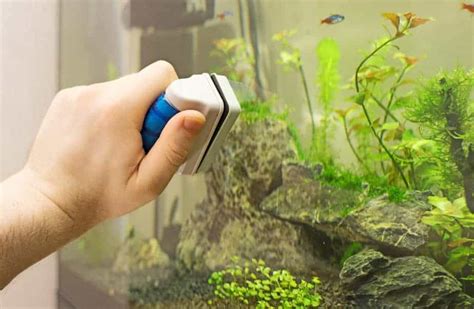A Beginner's Guide to Saltwater Fish Tank Cleaning
Maintaining a thriving saltwater aquarium is a rewarding hobby, but it demands diligent care. Cleaning your saltwater tank is crucial for the health and well-being of your fish and invertebrates. This beginner's guide will walk you through the essential cleaning tasks, helping you keep your aquatic ecosystem pristine. Unlike freshwater tanks, saltwater tanks require a more delicate approach due to the sensitive nature of the marine environment.
What are the essential cleaning tasks for a saltwater aquarium?
Regular cleaning encompasses several key tasks, each with its own frequency and technique:
-
Water Changes: This is arguably the most important aspect of saltwater tank maintenance. Regular water changes remove accumulated waste, replenish essential minerals, and maintain stable water parameters. Aim for a 10-20% water change every 1-2 weeks, depending on tank size and bioload (the number of fish and invertebrates).
-
Substrate Cleaning: The substrate (sand or rock) serves as a biological filter, housing beneficial bacteria. Avoid disturbing it excessively. A gentle siphon using a gravel vacuum during water changes will remove accumulated debris. Overly aggressive cleaning can disrupt the delicate bacterial balance.
-
Glass Cleaning: Algae growth on the glass is inevitable. Use a magnetic algae scraper for easy interior and exterior cleaning without disturbing the water too much. Avoid harsh chemicals; plain water is usually sufficient.
-
Filter Maintenance: Your filter is the heart of your system. Regular maintenance prevents clogs and ensures optimal filtration. Depending on your filter type, you might need to replace filter media (e.g., filter floss, filter pads) every few weeks or months. Cleaning filter media too frequently can remove beneficial bacteria, so follow the manufacturer's guidelines.
-
Live Rock Cleaning: Live rock is a critical component of a saltwater aquarium, housing bacteria and providing habitat. It shouldn't require frequent cleaning. During water changes, gently siphon away any visible debris. Over-cleaning can damage the beneficial bacteria colonies.
How often should I clean my saltwater fish tank?
The frequency of cleaning depends on several factors:
- Tank Size: Larger tanks require less frequent cleaning.
- Bioload: Higher bioloads (more fish and invertebrates) generate more waste, requiring more frequent maintenance.
- Filtration: Efficient filtration can reduce the frequency of cleaning.
However, a general guideline is to perform a partial water change every 1-2 weeks and spot-clean the glass as needed. Regular observation is key; adjust your cleaning schedule as necessary.
What are the best tools for cleaning a saltwater aquarium?
Investing in the right tools makes cleaning easier and more efficient:
- Gravel Vacuum (Siphon): Used during water changes to remove debris from the substrate.
- Magnetic Algae Scraper: Effectively cleans algae from the inside and outside of the glass without needing to reach inside the tank.
- Water Testing Kit: Essential for monitoring water parameters (ammonia, nitrite, nitrate, pH, salinity). Consistent testing is crucial.
- Bucket: A dedicated bucket for preparing saltwater for water changes.
What should I avoid when cleaning my saltwater fish tank?
- Harsh Chemicals: Avoid using any cleaning products containing ammonia, chlorine, or other chemicals toxic to marine life.
- Over-Cleaning: Excessive cleaning can disrupt the delicate balance of the aquarium ecosystem.
- Disturbing Live Rock: Minimize disruption to live rock to preserve beneficial bacteria.
- Ignoring Water Parameters: Regularly testing water parameters is crucial for early detection of problems.
What are the signs of a dirty saltwater tank?
Several signs indicate that your saltwater tank needs cleaning:
- Cloudy Water: Suggests excessive waste or a problem with the filtration system.
- Excessive Algae Growth: Rapid algae growth points to nutrient imbalances.
- Unpleasant Odor: A foul smell indicates decaying organic matter.
- Fish exhibiting unusual behavior: Lethargy or erratic swimming could indicate poor water quality.
By following this guide and establishing a regular cleaning routine, you can ensure the long-term health and beauty of your saltwater aquarium. Remember, patience and consistency are key to success in this rewarding hobby. Regular monitoring and timely intervention will help maintain a healthy and thriving environment for your marine inhabitants.

